Astronautics 2016 on Geektimes, part 2
All events and topics from the field of space exploration, which we talked about at Geektimes in 2016, could not be added to one article. And even in two. Therefore, we continue the conversation. The first part read this link .

Someone loses, and someone finds. At the end of April 2016, Japan recognized the Hitomi satellite as lost forever. The official version of the failure of the space X-ray telescope according to the official version was a software error . Error worth 273 million dollars .
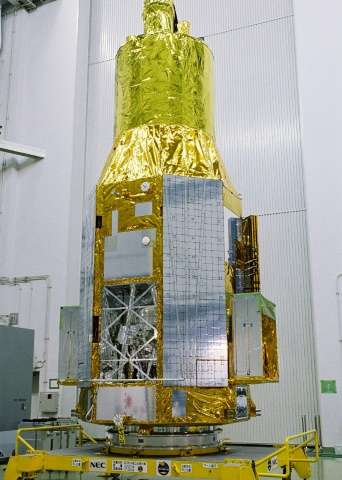
')
And NASA discovered the Beagle-2 spacecraft, which in 2003 sat on the surface of Mars and disappeared. The descent module was part of the Mars-Express station of the European Space Agency. It was possible to find the device using the HiRise camera installed on the Martian MRO orbital apparatus and a new image processing technique.

We have GLONASS, the Americans have deployed GPS, and India has fully earned the IRNSS system - the Indian regional satellite navigation system. That's just the accuracy of the system is high only in India itself, so it is unlikely that they will build in new iPhone sensors for it. For comparison: GPS and GLONASS are provided by 24 satellites, and IRNSS deployment is completed on the seventh. It took only 2 years.
The system will determine the location with an accuracy of up to 10 meters in India and up to 20 meters - in the Indian Ocean at a distance of 1,500 kilometers around the mainland.
Watch the video of the launch of the PSLV-C33 rocket with a satellite on board.
On April 8, after several unsuccessful attempts to land the first stage of the Falcon 9 rocket on the floating platform, SpaceX managed to do it. At the end of that month, SpaceX posted a 360-degree video of landing from a camera on the platform itself.
And where does SpaceX store the steps that you managed to return? In May, the company showed a special hangar .
At the beginning of May 2016, SpaceX updated its price list and added the cost of delivering cargo to Mars. The maximum load during the flight to the Red Planet will be 4.02 tons for the Falcon 9 and 13.6 tons for the Falcon Heavy, and the launch cost in 2018 will be 62 million and 90 million dollars, respectively.
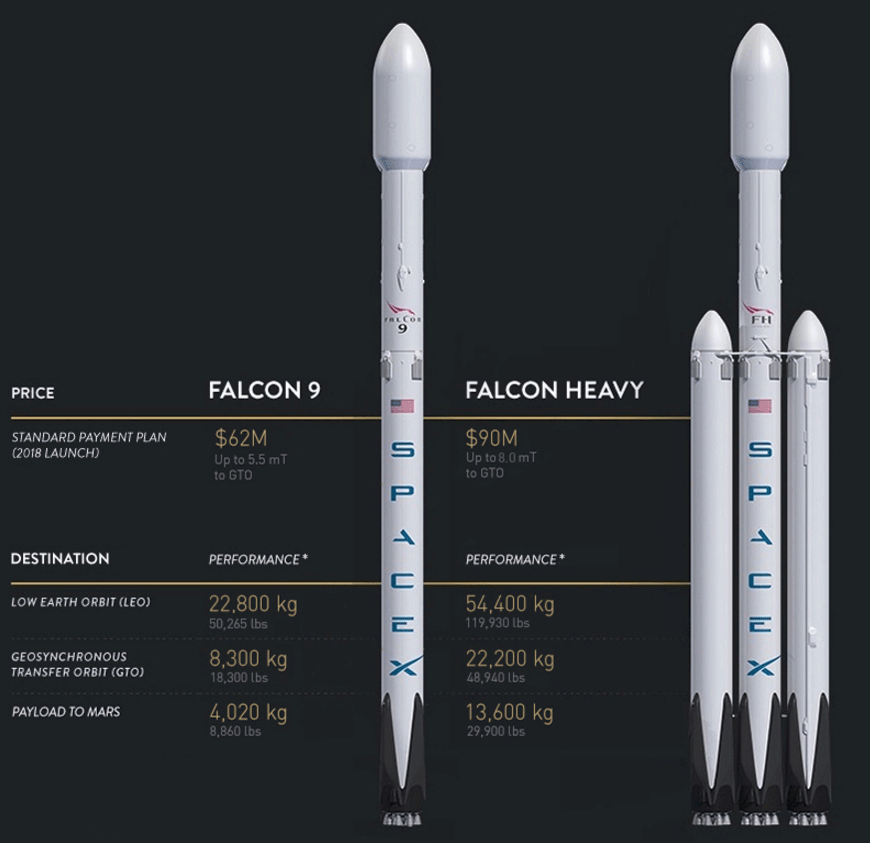
On April 28, the Soyuz-2.1a launch vehicle launched three spacecraft into orbit: Lomonosov, Aist-2D, and SamSat-218. And the last of them, the project of students of the Samara State Aerospace University, at first transmitted only fragmentary signals, and later stopped communicating at all . And here the reasons and the device itself are considered in detail .
At the same time, the Aist-2D is operating in normal mode and has already begun to transmit images from space.

On May 9, 2016, the inhabitants of the Earth had the opportunity to observe the passage of Mercury across the disk of the Sun. A small black dot moved across the sun disk, which captured enthusiasts around the world. Including, of course, users of Geektimes, who made a lot of excellent photos. You can see them in this article and in the comments to it.

And in this photo from Thierry Lego we see at the same time the Sun, Mercury and the International Space Station.

In May 2016, news of the Canadian schoolboy William Gaduri, who used Google Maps and other satellite photos, discovered the lost city of Maya civilization by overlaying a settlement map on a constellation map, spread around the world. Unfortunately, instead of the supposed pyramid in the center of the city, the field was mowed in 1999. The myth has been debunked : the schoolboy is well done, and the scientific community and journalists were wrong.
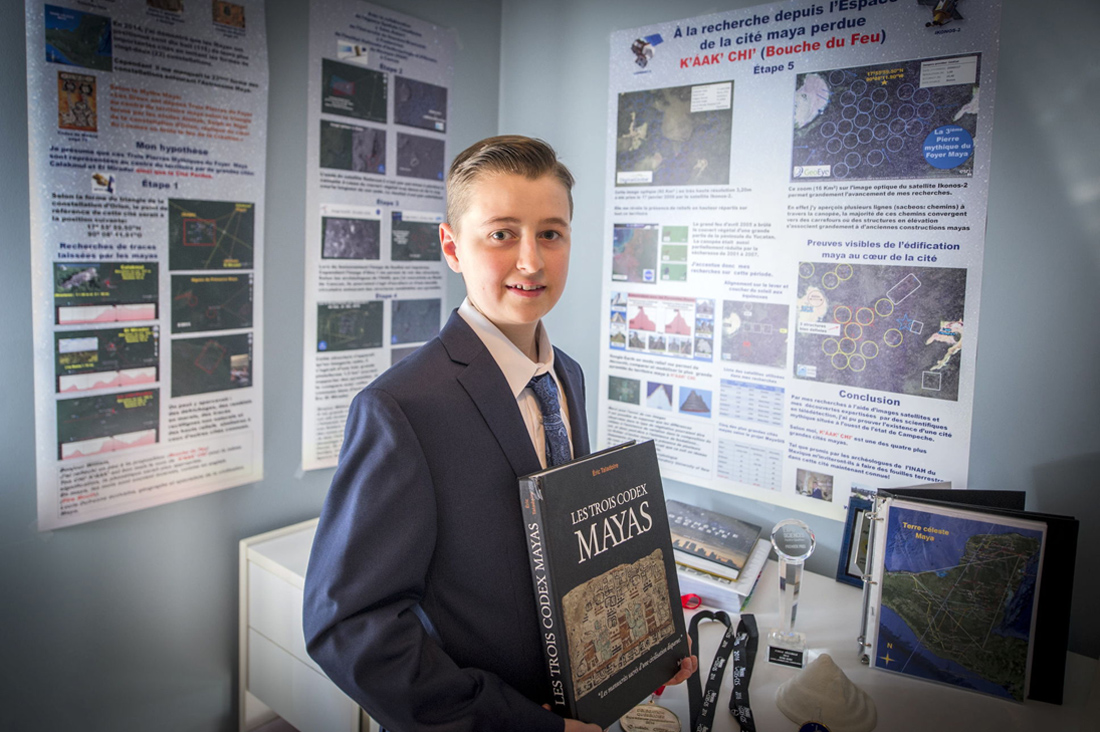
The only cargo ship that can bring materials from the International Space Station to Earth is the SpaceX Dragon. On May 11, 2016, the truck undocked from the ISS and returned to the home planet the waste material, freezers with samples of scientific experiments and a block of data and analyzes collected during the year of stay in the orbit of Scot Kelly and Mikhail Kornienko .
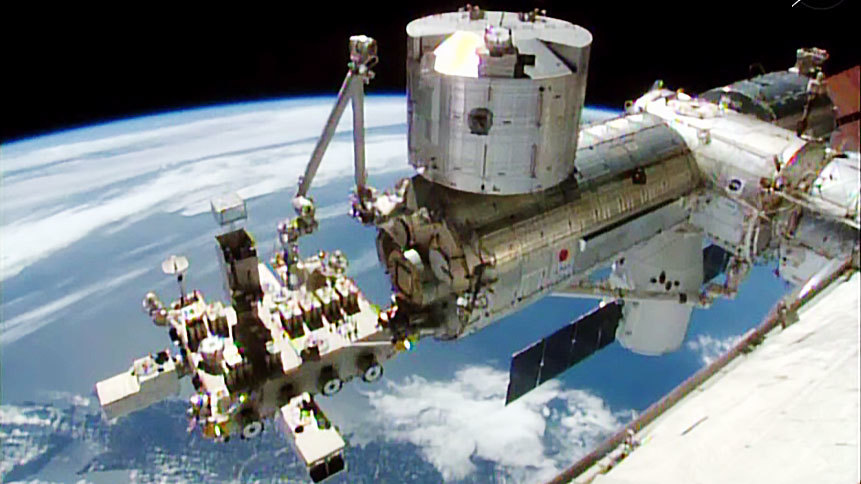
The real space thriller could begin on May 13 on the ISS, when a fragment of garbage crashed into the station. Then a porthole cracked from a piece of paint or metal no larger than a few thousandths of a millimeter. The diameter of the damaged area was about 7 millimeters.
To prevent such collisions - and in fact, in order to smash the ISS into parts, a fragment of just 10 centimeters is needed - specialists from NASA have to track half a million relatively large fragments of garbage. To avoid an accident, the ISS maneuvers and dodges attacks.
And on May 15 we celebrated one hundred thousand revolutions of the ISS around the Earth.
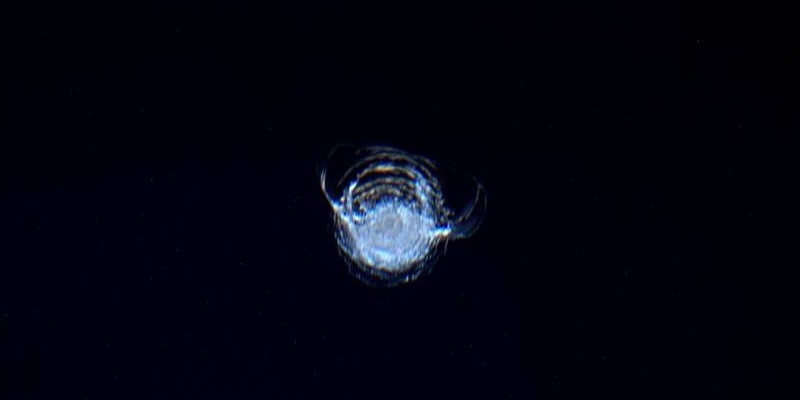
We spoke about the satellites made by students more than once, but for the first time the school satellite was launched only on December 6, 2015. And in May 2016, he came in contact with an orbit of a height of 400 kilometers. The satellite was designed by students of the St. Thomas More Cathedral School from Arlington, Virginia, USA.
In the photo below - schoolchildren are watching the satellite coming out of the ISS into space.
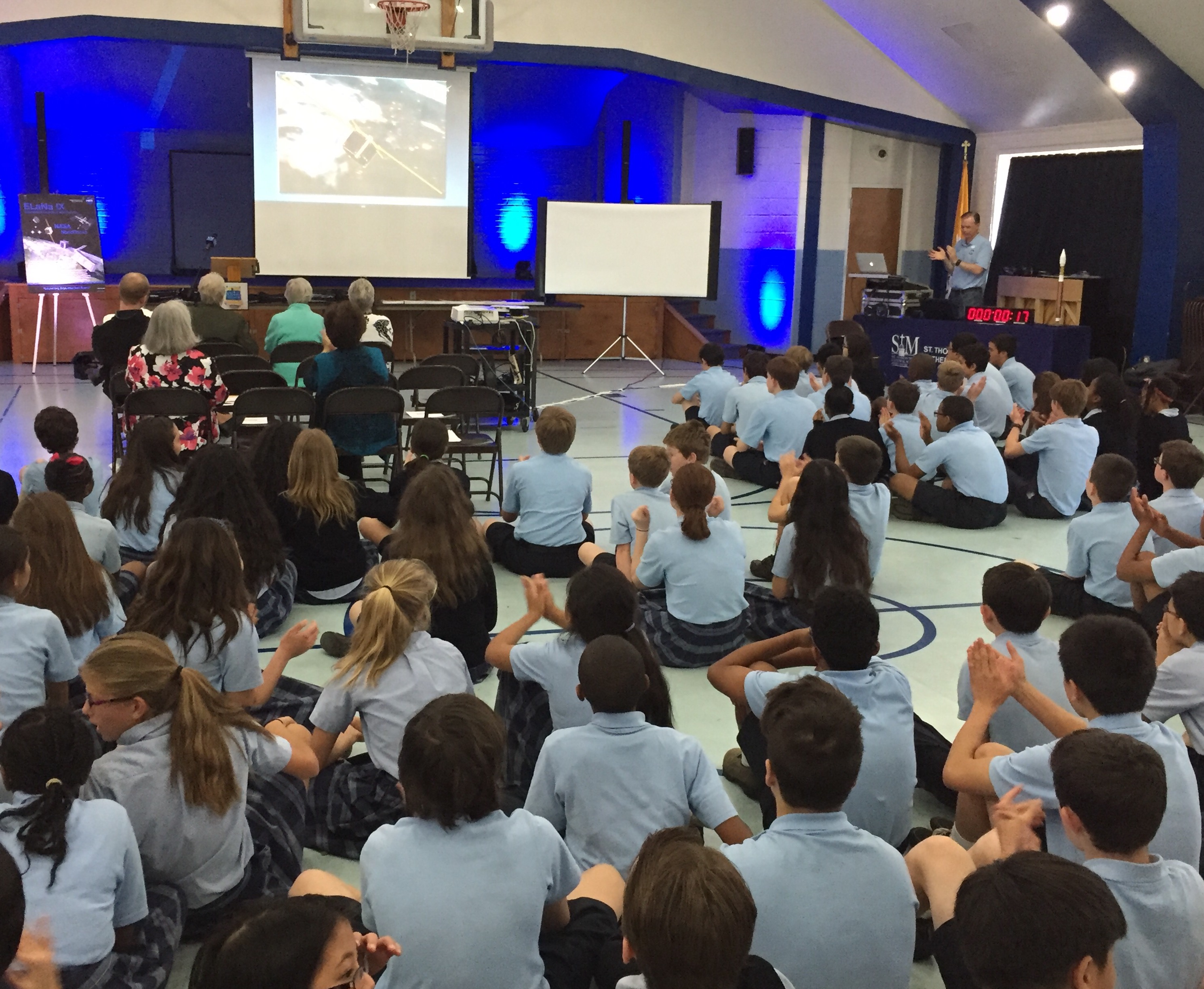
On May 26, 2016, the first in the history of the station the inflatable module BEAM was launched on the ISS. We delivered it in April, and in May we watched the deployment live .
Read more about the American space fake .
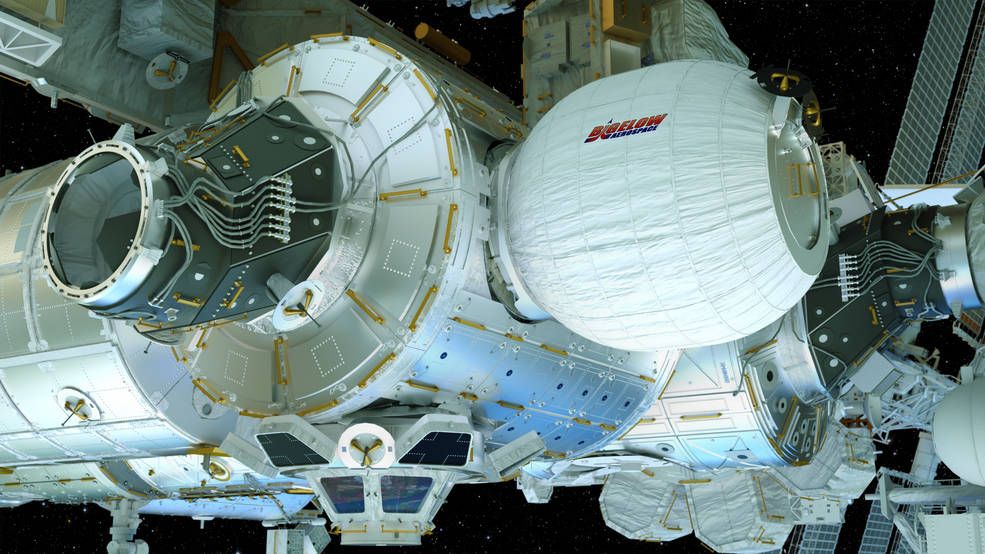
NASA in June 2016 made a fire on the spacecraft Cygnus. The experiment was conducted with the ignition of a tissue sample of a meter in length. Prior to this, the device left the board of the International Space Station. The goal was to test how the fire would behave in microgravity.
Blue Origin in June for the fourth time took off and landed apparatus New Shepard. If the company continues to experiment just as successfully, then in 2018 Blue Origin will begin to make commercial flights with passengers.
For the first time, the launch process of New Shepard could be watched live. The rocket itself is intended for suborbital tourism - that is, for a “jump” into space with a ship to a height of more than 100 kilometers and the subsequent soft landing. The flight itself lasts about ten minutes, weightlessness lasts from three to four minutes.
In 2015, the New Shepard made the first flight. The same rocket has already experienced four successful launches.
As part of the fourth flight on board, we conducted several experiments under microgravity conditions. Details about the launch, read this link .
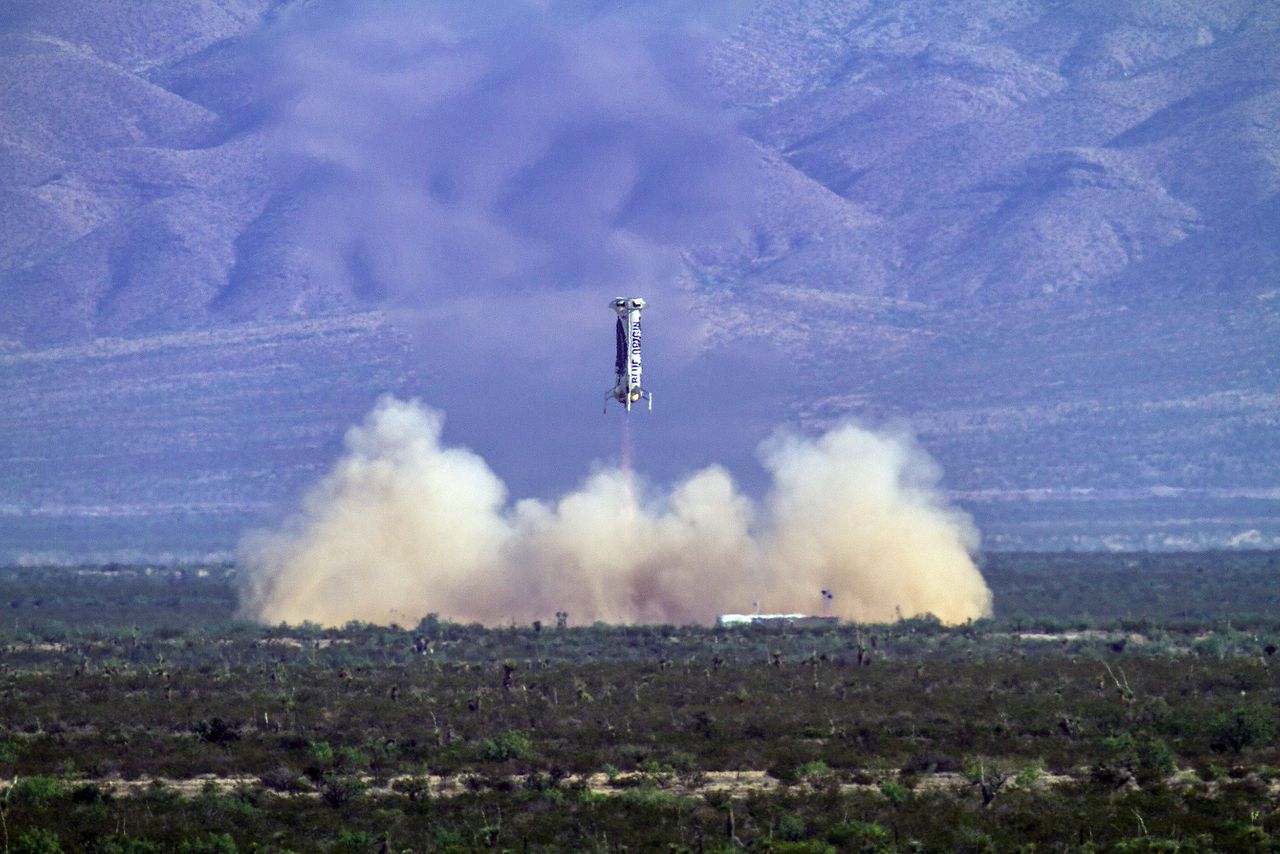
In Russia, too, there are private space companies. About how to make your rocket in our country, said the founder of the company "Cosmocourse" Pavel Pushkin .
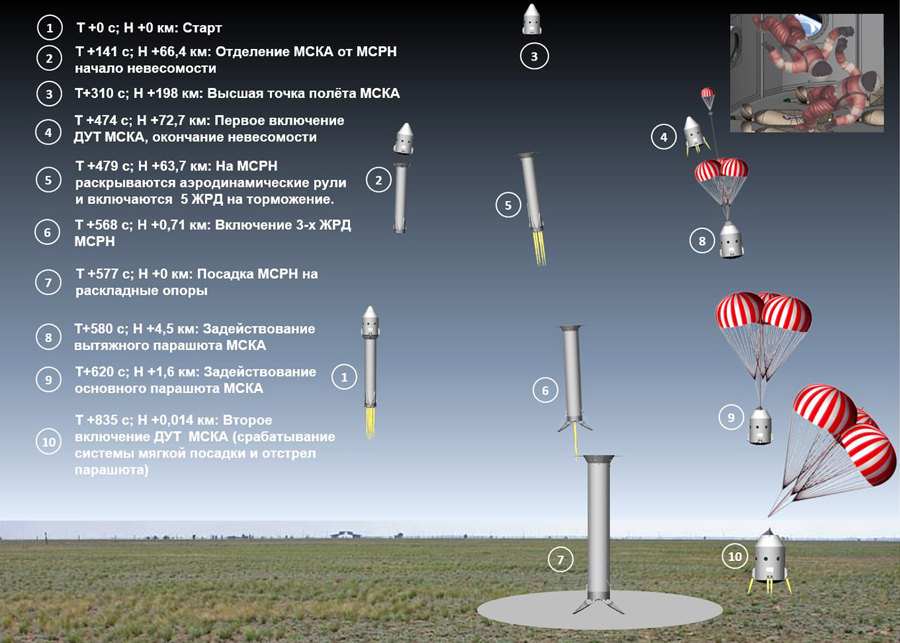
On July 14, 1965, the Mariner 4 space station approached Mars and took several photos using a large analog camera. Images in the form of a digital code were sent to Earth, where it had to be passed through a decoder, which gave the final result in a few hours.
But how can you endure so much? NASA then decided to decode the image independently, manually. With the help of colored pencils. So the first image of Mars was not a photograph, but a colored sketch.
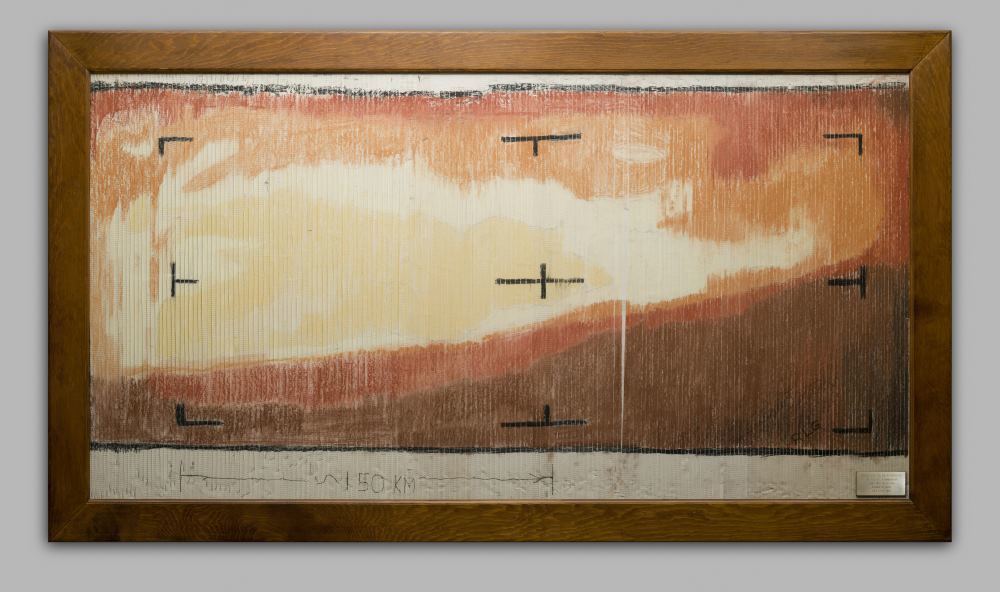
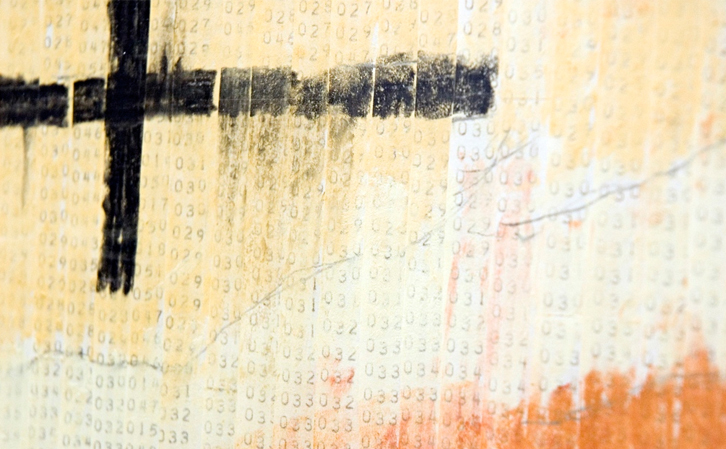
The flights of the Space Shuttle program ended on July 21, 2011. The Atlantis spacecraft with four astronauts on board was launched to the International Space Station on July 8, 2011, on July 19, the unit undocked from the ISS and returned to Earth on July 21. At the station then was Michael Fossum. With shaking hands, he captured the final flight of the Atlantis to the camera.

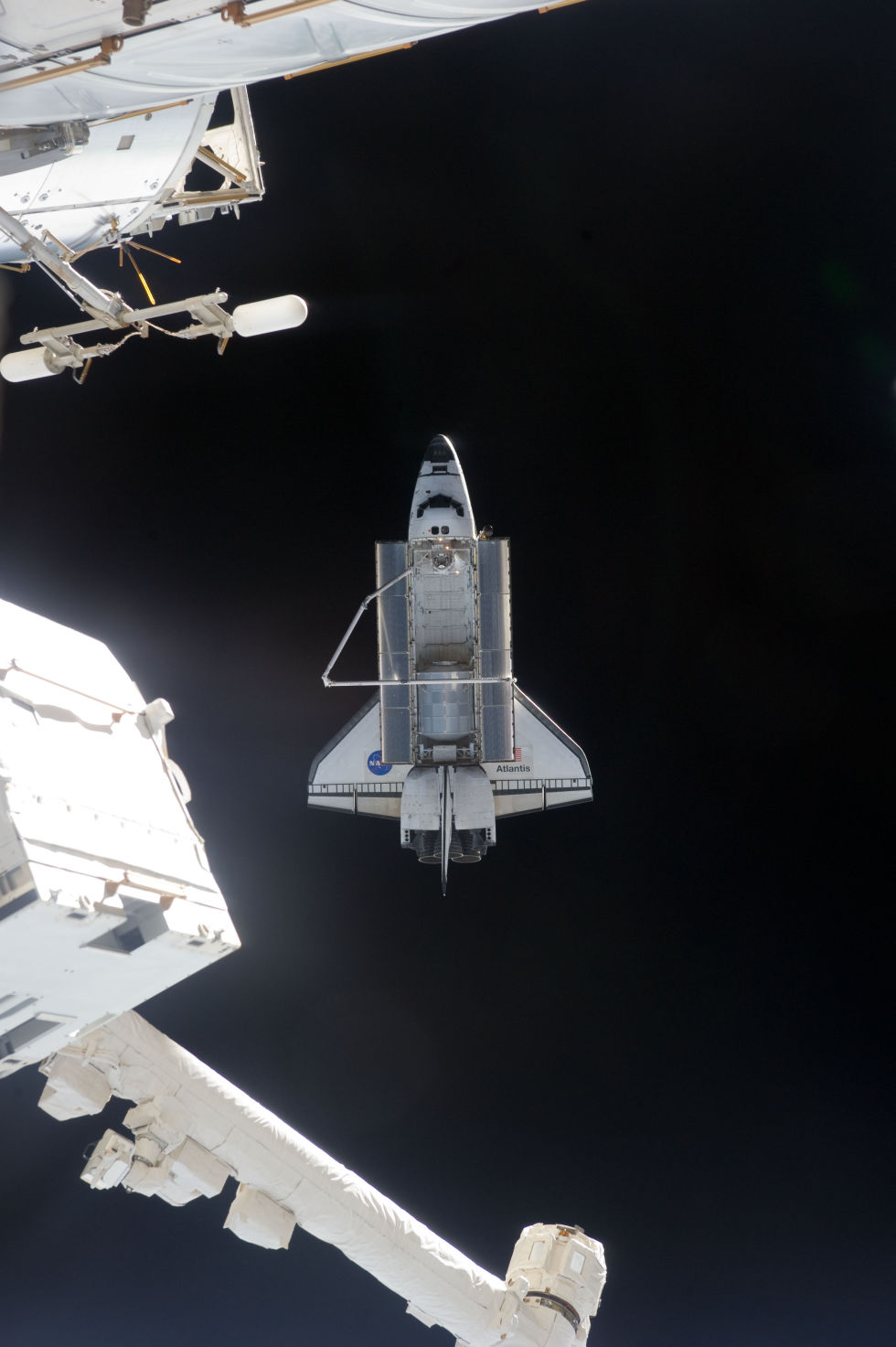
On August 5, 2011, NASA launched the automatic interplanetary station “Juno” to Jupiter, named after the wife of the ancient Roman god Jupiter. The station is equipped with a set of tools, including a microwave radiometer capable of looking 550 kilometers under clouds, a high-energy particle detector, an infrared aurora cartographer, and other devices.
On July 4, 2016, the station went into orbit of the planet, and after another six days from Earth, the JunoCam camera was turned on. The photo below was taken on July 10 , when Yunon was at a distance of 4.3 million kilometers from the gas giant.
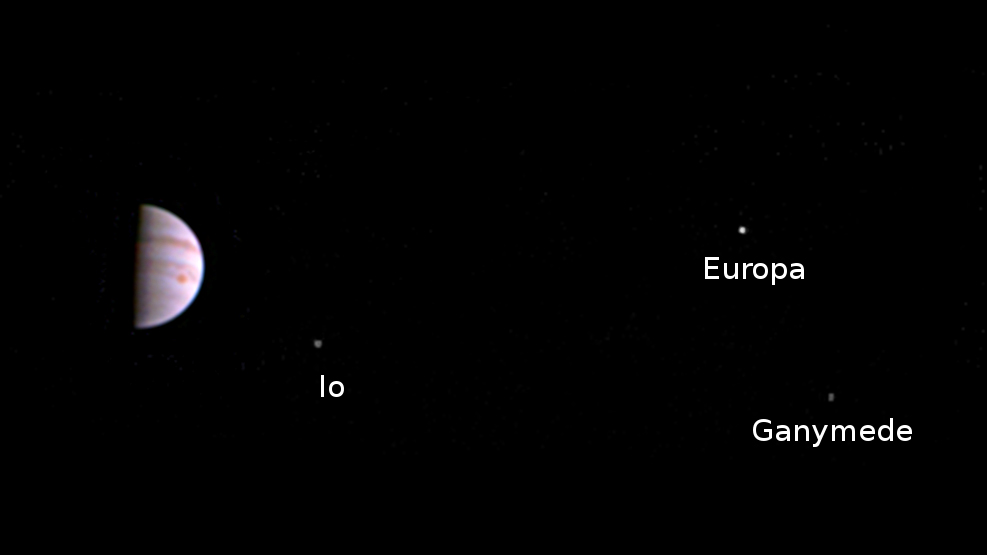
In the summer of 2016, Zelenyikot visited the Vostochny cosmodrome and told in great detail and showed how everything worked there. By reading required.

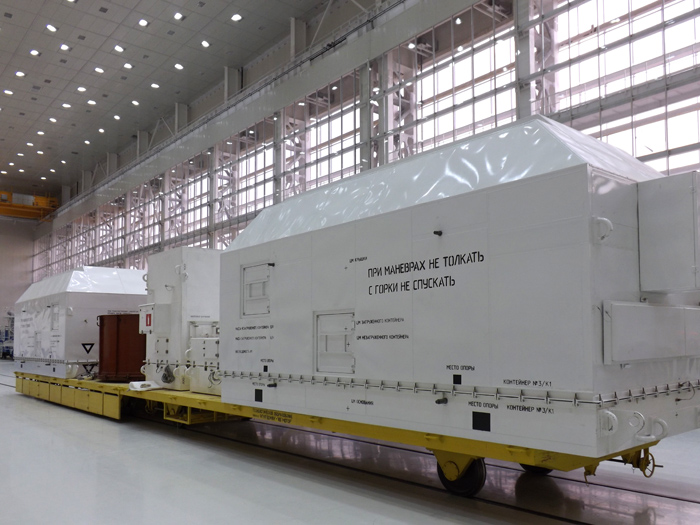
The Danish non-profit company Copenhagen Suborbitals aims to manned suborbital launch and the creation of aerospace equipment in accordance with the principles of open source. She has already built and launched several rockets, for the first time in June 2011. It was a HEAT-1X with a hybrid engine and a crash test dummy capsule. The organization works through donations and sponsorships. For construction, it uses publicly available materials, including hoses, which can be bought at the nearest hardware store.
On July 23, 2016, the organization launched the Nexo 1 rocket from an offshore platform in the Baltic Sea.

The time will come, and man will begin to live in space and on other planets. In any case, it seems to me that this can not be avoided - only time and money is needed for research. Many of the insights and suggestions made over the past one hundred-plus years can be used for space exploration . NASA has already selected contractors for the development of housing in deep space.
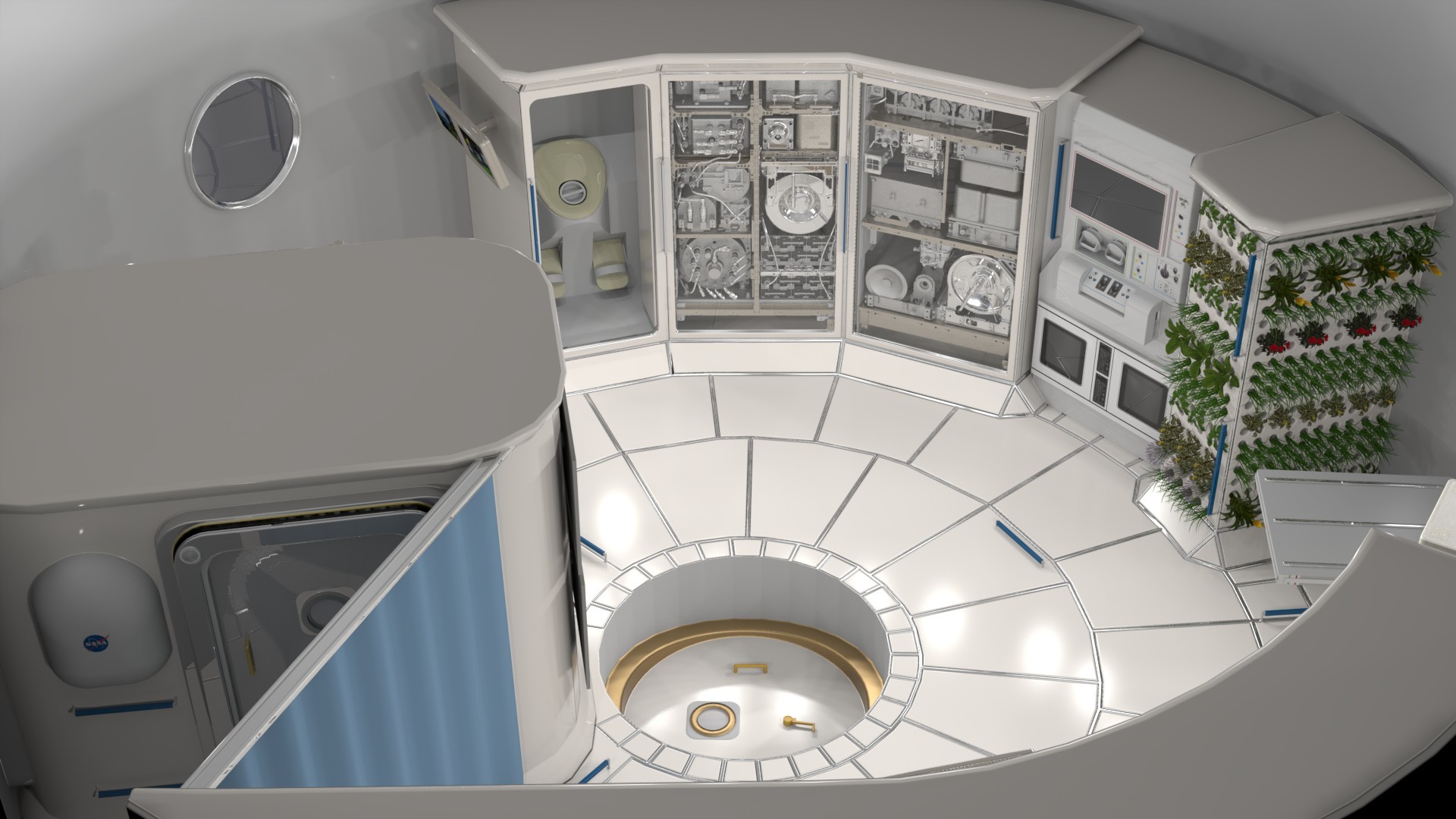
Everyone knows the first man to be in space. And what about the second? Filling this gap and remembering the forgotten flight of the “Eagle” - German Titov, who stayed in orbit aboard the Vostok-2 for more than a day and was the first to sleep in space.

In August 2016, a thousand photographs of Mars appeared on the website of the HiRISE telescope . We discussed them on Geektimes, admire the beauty of a distant planet . Mars, which from a distance seems to us to be red or orange, near it turns out to be a more diverse planet.

In 2006, two STEREO observatories, A and B, went into space. One of the vehicles, STEREO-B, lost contact with the Earth after another sunset. Such losses were planned - for three months a year, the Sun rose between each of the vehicles and the home planet, but in 2014 STEREO-B for some reason could not send an antenna to the Earth after the next scheduled break. Two years later, the connection was restored , although it was not possible to find out the reasons for the failure.
The images below show photographs of Comet Enke near the Sun in April 2007 and the stereogram of the Sun from two solar observatories.
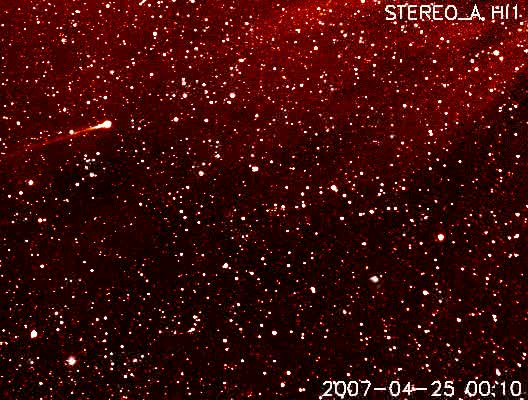



Someone loses, and someone finds. At the end of April 2016, Japan recognized the Hitomi satellite as lost forever. The official version of the failure of the space X-ray telescope according to the official version was a software error . Error worth 273 million dollars .

')
And NASA discovered the Beagle-2 spacecraft, which in 2003 sat on the surface of Mars and disappeared. The descent module was part of the Mars-Express station of the European Space Agency. It was possible to find the device using the HiRise camera installed on the Martian MRO orbital apparatus and a new image processing technique.

We have GLONASS, the Americans have deployed GPS, and India has fully earned the IRNSS system - the Indian regional satellite navigation system. That's just the accuracy of the system is high only in India itself, so it is unlikely that they will build in new iPhone sensors for it. For comparison: GPS and GLONASS are provided by 24 satellites, and IRNSS deployment is completed on the seventh. It took only 2 years.
The system will determine the location with an accuracy of up to 10 meters in India and up to 20 meters - in the Indian Ocean at a distance of 1,500 kilometers around the mainland.
Watch the video of the launch of the PSLV-C33 rocket with a satellite on board.
On April 8, after several unsuccessful attempts to land the first stage of the Falcon 9 rocket on the floating platform, SpaceX managed to do it. At the end of that month, SpaceX posted a 360-degree video of landing from a camera on the platform itself.
And where does SpaceX store the steps that you managed to return? In May, the company showed a special hangar .
At the beginning of May 2016, SpaceX updated its price list and added the cost of delivering cargo to Mars. The maximum load during the flight to the Red Planet will be 4.02 tons for the Falcon 9 and 13.6 tons for the Falcon Heavy, and the launch cost in 2018 will be 62 million and 90 million dollars, respectively.

On April 28, the Soyuz-2.1a launch vehicle launched three spacecraft into orbit: Lomonosov, Aist-2D, and SamSat-218. And the last of them, the project of students of the Samara State Aerospace University, at first transmitted only fragmentary signals, and later stopped communicating at all . And here the reasons and the device itself are considered in detail .
At the same time, the Aist-2D is operating in normal mode and has already begun to transmit images from space.

On May 9, 2016, the inhabitants of the Earth had the opportunity to observe the passage of Mercury across the disk of the Sun. A small black dot moved across the sun disk, which captured enthusiasts around the world. Including, of course, users of Geektimes, who made a lot of excellent photos. You can see them in this article and in the comments to it.

And in this photo from Thierry Lego we see at the same time the Sun, Mercury and the International Space Station.

In May 2016, news of the Canadian schoolboy William Gaduri, who used Google Maps and other satellite photos, discovered the lost city of Maya civilization by overlaying a settlement map on a constellation map, spread around the world. Unfortunately, instead of the supposed pyramid in the center of the city, the field was mowed in 1999. The myth has been debunked : the schoolboy is well done, and the scientific community and journalists were wrong.

The only cargo ship that can bring materials from the International Space Station to Earth is the SpaceX Dragon. On May 11, 2016, the truck undocked from the ISS and returned to the home planet the waste material, freezers with samples of scientific experiments and a block of data and analyzes collected during the year of stay in the orbit of Scot Kelly and Mikhail Kornienko .

The real space thriller could begin on May 13 on the ISS, when a fragment of garbage crashed into the station. Then a porthole cracked from a piece of paint or metal no larger than a few thousandths of a millimeter. The diameter of the damaged area was about 7 millimeters.
To prevent such collisions - and in fact, in order to smash the ISS into parts, a fragment of just 10 centimeters is needed - specialists from NASA have to track half a million relatively large fragments of garbage. To avoid an accident, the ISS maneuvers and dodges attacks.
And on May 15 we celebrated one hundred thousand revolutions of the ISS around the Earth.

We spoke about the satellites made by students more than once, but for the first time the school satellite was launched only on December 6, 2015. And in May 2016, he came in contact with an orbit of a height of 400 kilometers. The satellite was designed by students of the St. Thomas More Cathedral School from Arlington, Virginia, USA.
In the photo below - schoolchildren are watching the satellite coming out of the ISS into space.

On May 26, 2016, the first in the history of the station the inflatable module BEAM was launched on the ISS. We delivered it in April, and in May we watched the deployment live .
Read more about the American space fake .

NASA in June 2016 made a fire on the spacecraft Cygnus. The experiment was conducted with the ignition of a tissue sample of a meter in length. Prior to this, the device left the board of the International Space Station. The goal was to test how the fire would behave in microgravity.
Blue Origin in June for the fourth time took off and landed apparatus New Shepard. If the company continues to experiment just as successfully, then in 2018 Blue Origin will begin to make commercial flights with passengers.
For the first time, the launch process of New Shepard could be watched live. The rocket itself is intended for suborbital tourism - that is, for a “jump” into space with a ship to a height of more than 100 kilometers and the subsequent soft landing. The flight itself lasts about ten minutes, weightlessness lasts from three to four minutes.
In 2015, the New Shepard made the first flight. The same rocket has already experienced four successful launches.
As part of the fourth flight on board, we conducted several experiments under microgravity conditions. Details about the launch, read this link .

In Russia, too, there are private space companies. About how to make your rocket in our country, said the founder of the company "Cosmocourse" Pavel Pushkin .

On July 14, 1965, the Mariner 4 space station approached Mars and took several photos using a large analog camera. Images in the form of a digital code were sent to Earth, where it had to be passed through a decoder, which gave the final result in a few hours.
But how can you endure so much? NASA then decided to decode the image independently, manually. With the help of colored pencils. So the first image of Mars was not a photograph, but a colored sketch.


The flights of the Space Shuttle program ended on July 21, 2011. The Atlantis spacecraft with four astronauts on board was launched to the International Space Station on July 8, 2011, on July 19, the unit undocked from the ISS and returned to Earth on July 21. At the station then was Michael Fossum. With shaking hands, he captured the final flight of the Atlantis to the camera.


On August 5, 2011, NASA launched the automatic interplanetary station “Juno” to Jupiter, named after the wife of the ancient Roman god Jupiter. The station is equipped with a set of tools, including a microwave radiometer capable of looking 550 kilometers under clouds, a high-energy particle detector, an infrared aurora cartographer, and other devices.
On July 4, 2016, the station went into orbit of the planet, and after another six days from Earth, the JunoCam camera was turned on. The photo below was taken on July 10 , when Yunon was at a distance of 4.3 million kilometers from the gas giant.

In the summer of 2016, Zelenyikot visited the Vostochny cosmodrome and told in great detail and showed how everything worked there. By reading required.


The Danish non-profit company Copenhagen Suborbitals aims to manned suborbital launch and the creation of aerospace equipment in accordance with the principles of open source. She has already built and launched several rockets, for the first time in June 2011. It was a HEAT-1X with a hybrid engine and a crash test dummy capsule. The organization works through donations and sponsorships. For construction, it uses publicly available materials, including hoses, which can be bought at the nearest hardware store.
On July 23, 2016, the organization launched the Nexo 1 rocket from an offshore platform in the Baltic Sea.

The time will come, and man will begin to live in space and on other planets. In any case, it seems to me that this can not be avoided - only time and money is needed for research. Many of the insights and suggestions made over the past one hundred-plus years can be used for space exploration . NASA has already selected contractors for the development of housing in deep space.

Everyone knows the first man to be in space. And what about the second? Filling this gap and remembering the forgotten flight of the “Eagle” - German Titov, who stayed in orbit aboard the Vostok-2 for more than a day and was the first to sleep in space.

In August 2016, a thousand photographs of Mars appeared on the website of the HiRISE telescope . We discussed them on Geektimes, admire the beauty of a distant planet . Mars, which from a distance seems to us to be red or orange, near it turns out to be a more diverse planet.

In 2006, two STEREO observatories, A and B, went into space. One of the vehicles, STEREO-B, lost contact with the Earth after another sunset. Such losses were planned - for three months a year, the Sun rose between each of the vehicles and the home planet, but in 2014 STEREO-B for some reason could not send an antenna to the Earth after the next scheduled break. Two years later, the connection was restored , although it was not possible to find out the reasons for the failure.
The images below show photographs of Comet Enke near the Sun in April 2007 and the stereogram of the Sun from two solar observatories.



Source: https://habr.com/ru/post/400333/
All Articles